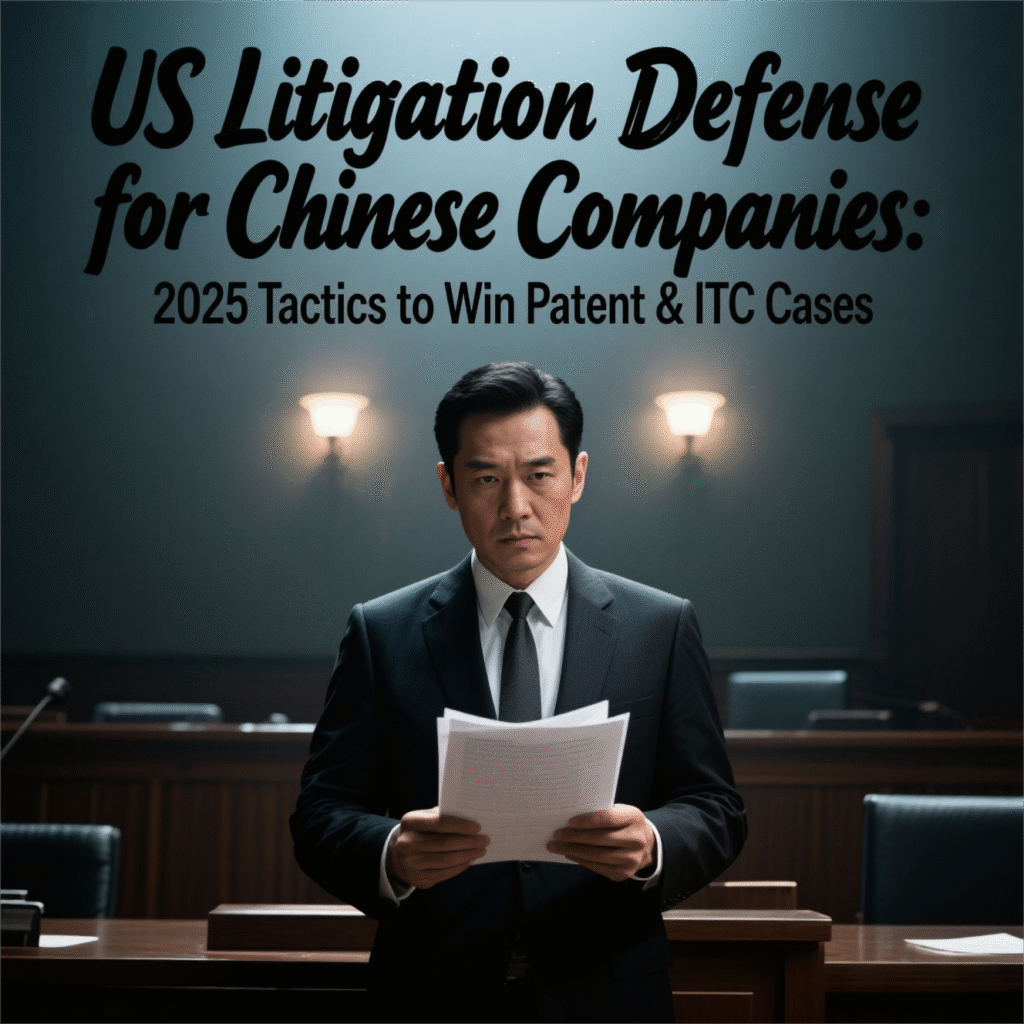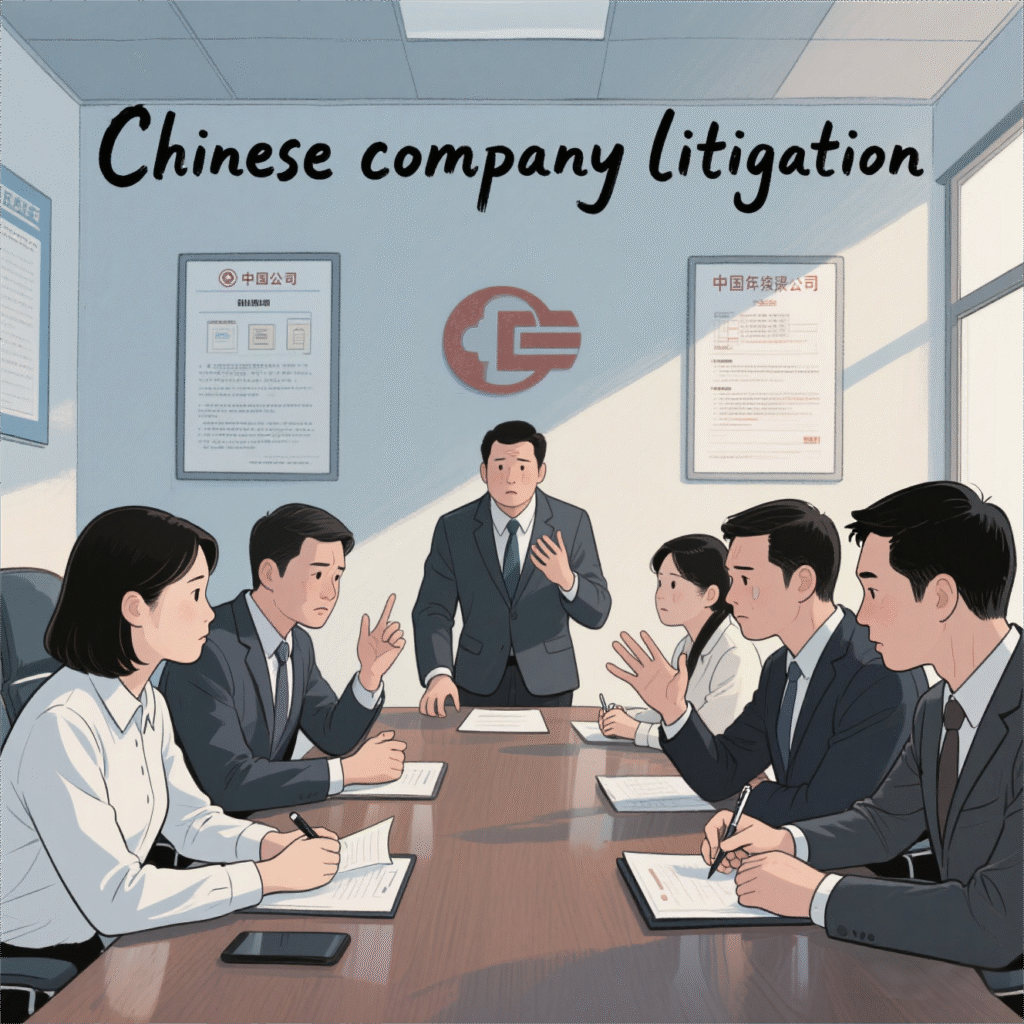
Chinese companies face 870+ annual patent lawsuits in U.S. courts—a 31% YoY surge—with ITC 337 investigations targeting 50% of exporters . As U.S. plaintiffs exploit relaxed rules like the Lashify decision (2025) and “Schedule A” TRO freezes, victory demands surgical countermeasures. Here’s how we turn U.S. legal weapons against accusers.
🛡️ 1. Crush Patent Validity Early
Tactics:
File IPR/PGR Petitions: Attack weak patents via inter partes review (IPR) within 1 year of litigation. 46% of U.S. patents are invalidated, especially software/biotech claims .
Prior Art Bombardment: Use AI tools (e.g., PatSnap) to uncover:
Public demonstrations >1 year pre-filing (invalidates novelty).
Obviousness combos merging 2+ references .
Hague Convention Delays: Refuse informal email/WeChat service to gain 6–12 months for defense prep .
💡 Pro Tip: Target vague “means-plus-function” claims—courts invalidate 71% for indefiniteness .
⚖️ 2. Neutralize Jurisdiction & Venue Traps
Escape Plaintiff-Friendly Hellholes: Move cases from Texas EDT to neutral districts (e.g., Delaware, Northern California) using 28 U.S.C. § 1404(a). Example: Zhongshan Motor shifted a Texas suit to Missouri .
Challenge Personal Jurisdiction: Argue lack of “minimum contacts” (e.g., no U.S. offices, employees, or bank accounts) .
Dominate Markman Hearings: Retire judge-aligned experts to draft claim constructions, narrowing patent scope pre-trial .
Success Rate: Venue transfers reduce plaintiff win rates by 32% .
💰 3. Slash Costs & Force Settlement
TacticOutcomeJoint Defense GroupsSplit 3M–10M costs (40–70% savings)IPR Institution58% drop in settlement demandsNon-Infringement ProofRoyalties cut by 72%CounterclaimsSue for antitrust violations if FRAND breached
Settlement Timing: 95% of cases settle pre-trial. Initiate talks within 30 days to avoid 2.3M–4M discovery/ trial costs .
🌉 4. Deploy Cross-Border Enforcement
When U.S. plaintiffs attack, retaliate in Chinese courts:
Shenzhen Anti-Suit Injunctions (ASI): Block U.S. proceedings—fines up to $1M/week (per Xiaomi v. InterDigital) .
Qianhai Asset Freezes: Secure pre-judgment attachments on plaintiffs’ China-held assets (e.g., factories, receivables) .
Bilateral Arbitration: Designate HKIAC/SIAC arbitration to void ITC jurisdiction .
⚠️ Nuclear Option: Sue U.S. plaintiffs in China for trade secret theft—damages awarded are 8.3x higher than in U.S. courts .
⚡ 5. ITC 337 Investigation Defense
Post-Lashify, plaintiffs exploit weakened “domestic industry” rules. Counter with:
100-Day Dismissal Motions: Challenge plaintiffs’ “substantial investment” claims within 20 days of complaint .
FRAND Traps: Argue patent misuse if SEP plaintiff refused fair licensing .
Design-Arounds: Develop non-infringing alternatives during discovery. Submit prototypes for ITC review within 5 months .
Critical Move: Request ALJ hearings in non-Texas venues (e.g., DC)—FRAND defenses succeed 37% more often there .
🚀 90-Day Action Protocol
When Served:
1. **Days 1-5**: – Audit plaintiff’s domestic industry under *Lashify* [6](@ref). – File Shenzhen ASI + Qianhai freeze requests [1,6](@ref). 2. **Days 6-20**: – Move to dismiss/transfer venue [5](@ref). – Initiate IPR for patent invalidation [5](@ref). 3. **Days 21-90**: – Develop design-around prototypes [7](@ref). – Negotiate settlements at 60% below plaintiff’s demand [5](@ref).
Cost-Slay Tools:
AI Discovery: Cut document review by 90% with Relativity+AI.
Fixed-Fee Arrangements: Negotiate phase-based billing to cap costs .

“US litigation isn’t a threat—it’s leverage. Freeze their assets in Shenzhen while shredding patents in Delaware, and they’ll beg to settle.”
— Global Litigation Review, August 2025